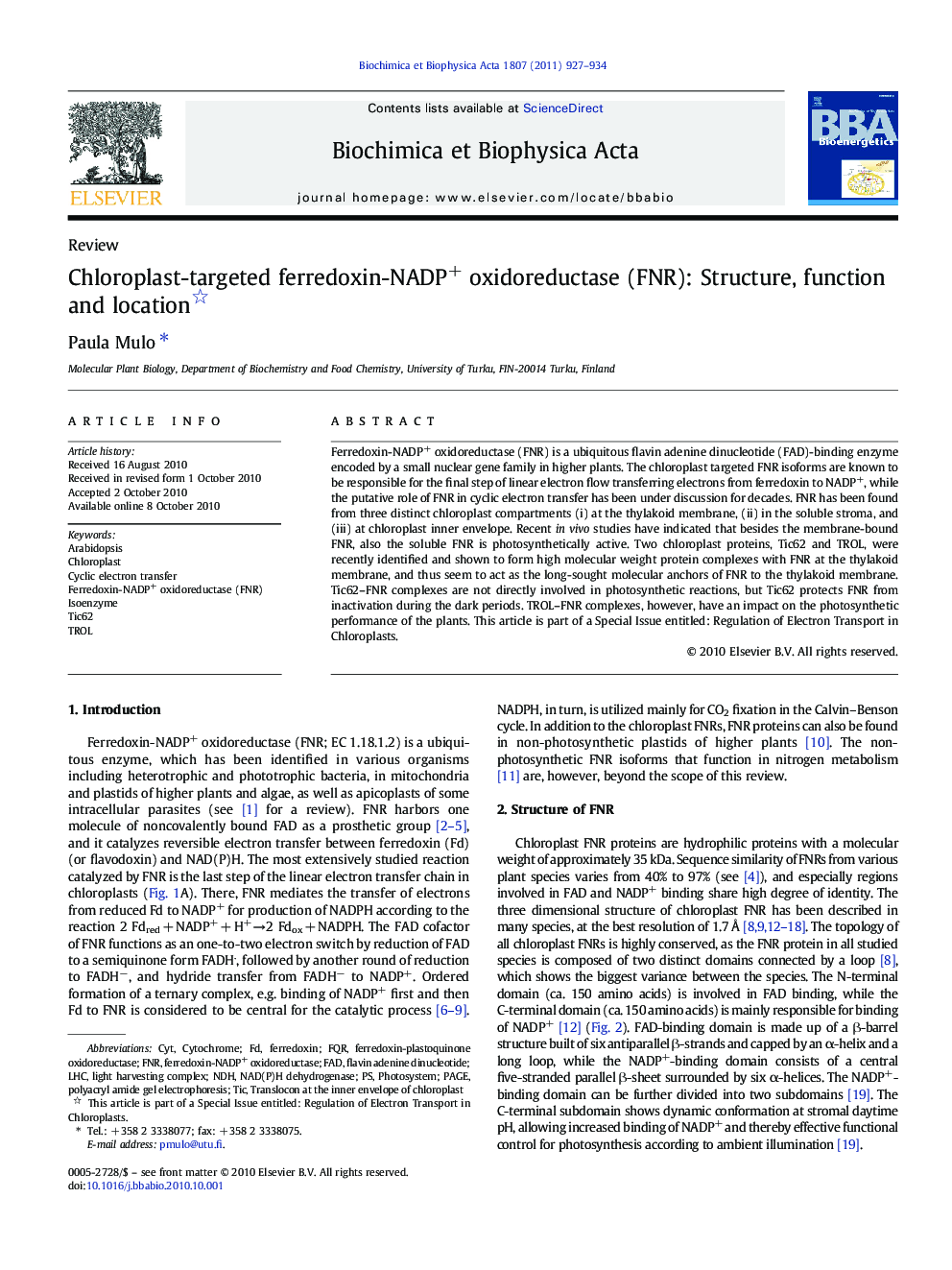| Article ID | Journal | Published Year | Pages | File Type |
|---|---|---|---|---|
| 1942653 | Biochimica et Biophysica Acta (BBA) - Bioenergetics | 2011 | 8 Pages |
Ferredoxin-NADP+ oxidoreductase (FNR) is a ubiquitous flavin adenine dinucleotide (FAD)-binding enzyme encoded by a small nuclear gene family in higher plants. The chloroplast targeted FNR isoforms are known to be responsible for the final step of linear electron flow transferring electrons from ferredoxin to NADP+, while the putative role of FNR in cyclic electron transfer has been under discussion for decades. FNR has been found from three distinct chloroplast compartments (i) at the thylakoid membrane, (ii) in the soluble stroma, and (iii) at chloroplast inner envelope. Recent in vivo studies have indicated that besides the membrane-bound FNR, also the soluble FNR is photosynthetically active. Two chloroplast proteins, Tic62 and TROL, were recently identified and shown to form high molecular weight protein complexes with FNR at the thylakoid membrane, and thus seem to act as the long-sought molecular anchors of FNR to the thylakoid membrane. Tic62–FNR complexes are not directly involved in photosynthetic reactions, but Tic62 protects FNR from inactivation during the dark periods. TROL–FNR complexes, however, have an impact on the photosynthetic performance of the plants. This article is part of a Special Issue entitled: Regulation of Electron Transport in Chloroplasts.
Research Highlights► FNR is found in three chloroplast compartments: thylakoids, stroma and envelope. ► Soluble FNR is photosynthetically active. ► FNR forms thylakoid complexes together with Tic62 and Trol. ► Thylakoid complex formation is redox dependent.
